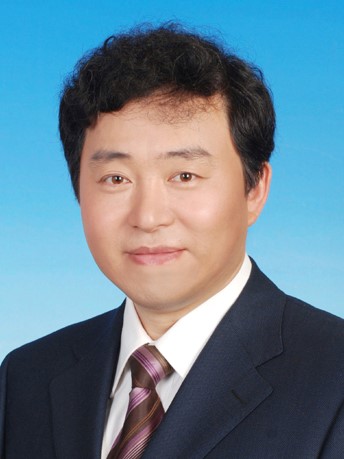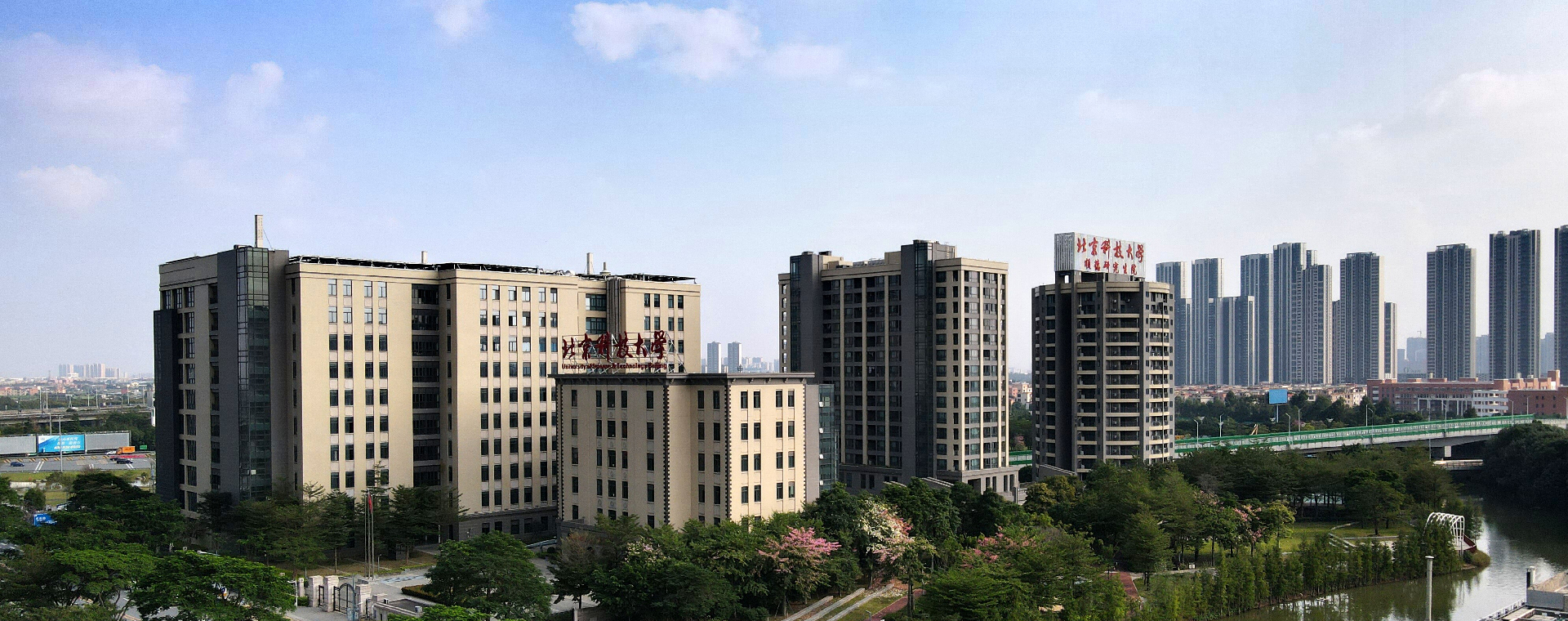
教授/博士生导师
计算机科学与技术
zxt@ustb.edu.cn
个人信息:
博士,教授,博士生导师 ,IEEE/CCF高级会员。 2000年4月于北京科技大学博士毕业留校,从事教学和科研工作。从2002年起,历任北京科技大学计算机科学与技术系副主任、信息工程学院副院长、计算机与通信工程学院副院长、北京科技大学顺德研究生院院长等职。担任中国计算机学会普及工委委员,中国计算机学会普适计算专委员会委员等学术兼职业,中国人工智能学会智慧医疗专委会常委等学术兼职,全球异构计算标准联盟(HSA)成员,中国材料与试验团体标准(CSTM)委员会委员。
研究方向:
计算机系统结构 无线传感器网络 芯片与集成电路设计人工智能与大数据技术 基因组学与生物信息学 基于多计算平台的设计
在顺德创新学院的基础科研条件:
团队依托计算机系统结构与数据智能研发中心建立,团队有教师8人,国家千人1人,客座教授1人,专职实验员2人,博硕士研究生50余人,设备固定资产约1000万元。
团队主要研究方向包括无线传感器网络与工业无线网络理论与应用技术、水下/地表下通信与网络系统研究、云计算体系结构与安全、信息艺术设计与可视化计算、生物信息学等。
依托顺德创新学院科研项目:
基于人工智能的医疗疾病精准智能诊断研究,北京科技大学顺德创新学院科技创新专项,2021.1.1-2022.12.31,项目负责人;
材料基因工程异构大数据汇交存储管理与应用服务,佛山市高等教育高层次人才项目,2023.1.1-2025.12.31,项目负责人。
代表性成果:
在大数据平台、工业物联网、计算机系统结构、无线/有线宽带网络、水下声纳和地表下磁感应的无线网络、云计算体系结构与安全、集成电路(ASIC/SOC)等研究方面,以项目负责人和课题负责人身份承接2项国家重点研发计划项目,20余项国家“863”“973”项目课题、国家“自然科学基金”项目等纵向科研项目,以及30余项企业合作项目。2018年,以项目负责人(“首席”)承接国家重点研发项目 “国家材料基因工程数据汇交与管理服务技术平台”,获得国家发明专利和软件著作权60余项,发表学术论文近200篇。2003年与团队共同研发成功有线宽带网络信道解调芯片(ASIC),并与TSMC流片和产业化。曾参与制定中国工业无线自动化国家标准(WIA-PA),国际标准IEC62601,美国ISA100.a无线网络等标准。近5年主要科研成果包括:
在大数据平台架构研究方面,研发了以半序集和泛函表达为基础的模式定义组件化的动态容器存储模型新“理论”和模式可视化动态构建核心技术,解决了困扰中国材料基工程MGE(美国:材料基因组,MGI)中多源异构材料数据统一定义和存储的难题,与美国国家标准与技术研究院(National Institute of Standards and Technology,NIST)材料基因组数据平台同期进行研究,实现了数据库模式设计由传统关系型数据库的“事前定义”到材料科学家和用户“事后定义”的转变,使得跨领域数据共享成为现实,并在精简数据类型定义、易用性、可视化交互编程、降低系统构建错误、提高开发效率方面处于国际先进水平。依托相关技术研发出的可视化开发平台——“国家材料基因工程数据汇交与管理服务技术平台”,截止2022年6月底已支持45个“十三五”国家重点研发项目,在核、能源、高温合金、芯片、高铁、航空航天、生物医学、同步辐射高能光源数据、第一原理计算等77个领域和方向用户自定义的2504种格式的共计“1381万条”材料科学数据。新存储理论和平台技术初期成果分别于2021年7月和2022年12月发表于Natute子刊Npj Computational Materials和Scientific Data,并申请国家发明专利。
在工业无线网络与物联网研究方向,出Mesh-Star工业无线网络拓扑模型,易于网络资源和协议优化,解决了困扰国际物联网标准WirelessHart和ZigBee网络规模、响应时间受限等缺点。共同提出了面向工业过程自动化的工业无线网络标准技术国家标准WIA-PA(Wireless Networks for Industrial Automation Process Automation ),于2016年成为中国第一个自主提出的国际电工联盟“世界标准(IEC62601)”,获得国家“十四五”智慧工厂优先推广技术。开发的鞍钢等大型流程工业监控系统,实现提质、提效、减少安全事故等综合效益。。针对人体动作捕捉精度存在的传感器漂移误差和畸变,采用Denavit-Hartenberg约定来描述正运动学结构,提出了一种基于几何运动特性的人体运动模型并进行充分的理论分析,在能耗损失较少的情况下,提高定位效率、降低误差。针对超宽带测距精度受非视距误差影响较大的问题,提出了以广义最大相关准则(GMCC)为代价函数的广义最大相关卡尔曼滤波算法(GMCKF)并验证了相关算法在工业环境中较KF、MCKF和MCCKF算法具有更好的应用效果。提出了一种新的基于最大相关准则和接收信号强度指示(RSSI)的自适应时延估计算法(RSSIMCC)。算法不用检测相位差,通过估计近场低频信号的电磁分量之间的时延,提高已有算法的收敛速度。该算法能够以较小的稳态误差估计时延,根据无线电信号的近场行为,并利用算法估计的时延来进行室内环境中的测距,可用于工业领域的定位与控制。
近年来,随着人工智能领域神经网络算法的快速发展及成熟普及,越来越多的应用场景需要神经网络算法进行处理。目前主流的神经网络算法一般采用称为张量的高维度数组进行运算,此类运算具有多维度、数据量大、计算量大的特点。现阶段的通用处理器在张量计算性能方面受限且在功耗开销方面表现过高,因此在一些移动端应用场景下无法达到神经网络运行的高效能要求。鉴于此,设计一款针对神经网络应用的张量处理器成为了解决上述问题的途径之一,并逐渐成为目前处理器设计领域的热点。研究者首先对神经网络算法进行了充分的分析,并尝试从软硬件协同设计、张量指令集定义以及处理器高效实现这三个方面出发,设计了一款高性能低功耗的张量处理器,该处理器兼容多种神经网络计算,并具有可扩展的计算架构。处理器在性能、功耗及面积等关键指标方面体现了一定的优势。
近三年,我们对染色质互作密度与基因表达调控之间的关系开展了计算生物学研究。生物染色质结构与基因的表达、转录、调控功能密切相关。利用显微镜技术观察染色质空间结构,分辨率较低,无法精准定位染色质空间结构与基因功能之间的关系。而高通量染色体构象捕获(Hi-C)技术的快速发展,为研究多尺度染色质结构(包括染色质环,拓扑相关结构域(TAD)和整体染色质三维空间结构)提供了高分辨率的染色质交互作用数据,从而促进复杂疾病以及癌症的相关研究。研究者以识别不同尺度下染色质结构为目的,面向高分辨率Hi-C数据,基于深度学习、密度聚类、非线性降维等计算方法,对不同尺度的染色质结构重构方法开展了深入研究。具体包括一种基于多模态特征融合的调控性染色质交互作用识别算法,从而实现从低分辨率Hi-C数据中识别到高比例调控性染色质交互作用(cell reports methods, 2022, 通讯作者)。一种基于层次密度聚类的拓扑相关结构域边界识别算法(Computational and Structural Biotechnology Journal, 2022,通讯作者),和一种基于非线性降维与分治策略的染色质三维结构重构算法(2022 IEEE International Conference on Bioinformatics and Biomedicine (BIBM). IEEE, 2022,通讯作者)
获得“北京市高等教育教学成果”“二等奖”,“国家技术发明”“二等奖”,其他省部级科技奖2项。
近期论文:
[1] Wang R, Xu C, Wu H, Shi Y, Duan S, Zhang X*. Gaussian Condensation Filter Based on Cooperative Constrained Particle Flow[J]. IEEE Internet of Things Journal, 2023.
[2] Wang R, Xu C, Dong R, Luo Z, Zheng R, Zhang X*. A secured big-data sharing platform for materials genome engineering: State-of-the-art, challenges and architecture[J]. Future Generation Computer Systems, 2023, 142: 59-74.
[3] Gong H, Li M, Ji M, Zhang X*, et al. MINE is a method for detecting spatial density of regulatory chromatin interactions based on a MultI-modal NEtwork[J]. Cell Reports Methods, 2023: 100386.
[4] Wan J, Xu C, Chen W, Wang R, Zhang X*. Abrupt moving target tracking based on quantum enhanced particle filter[J]. ISA transactions, 2023.
[5] Wang X, Wang P, Zhang X*, et al. Efficient and robust Levenberg–Marquardt Algorithm based on damping parameters for parameter inversion in underground metal target detection[J]. Computers & Geosciences, 2023, 176: 105354.
[6] Gong H, Li M, Ji M, Zhang X*, et al. Calculating the spatial density of regulatory chromatin interactions using multi-modal datasets from the same cell line[J]. STAR protocols, 2023, 4(2): 102188.
[7] Liu S, Liu Y, Zhang X*, et al. Improving the Performance of Cold-Start Recommendation by Fusion of Attention Network and Meta-Learning[J]. Electronics, 2023, 12(2): 376.
[8] Gong H, Ma F, Zhang X, et al. A 3D Chromosome Structure Reconstruction method with High Resolution Hi-C Data using Nonlinear Dimensionality Reduction and Divide-and-conquer strategy[J]. IEEE Transactions on NanoBioscience, 2023.
[9] Gong H, Chen Z, Tang Y, Li M, Zhang S, Zhang X*, et al., Computational methods for identifying enhancer-promoter interactions[J]. Quantitative Biology, 2023.
[10] Xiu H., He J, Zhang X*, et al., HRC-mCNNs: A Hybrid Regression and Classification Multi-branch CNNs for Automatic Meter Reading with Smart Shell [J]. IEEE Internet of Things Journal, 2022, 9(24): 25752-25766.
[11] Gong H, He J, Zhang X*, et al. A repository for the publication and sharing of heterogeneous materials data[J]. Scientific Data, 2022, 9(1): 787.
[12] Gong H, Yang Y, Zhang X*, et al. CASPIAN: A method to identify chromatin topological associated domains based on spatial density cluster[J]. Computational and Structural Biotechnology Journal, 2022, 20: 4816-4824.
[13] Wang X, Wang P, Zhang X*, et al. Target electromagnetic detection method in underground environment: A review[J]. IEEE Sensors Journal, 2022, 22 (14).
[14] Liang T, Wang L, Shi S, Johh G, Zhang X*. TCX: a programmable tensor processor[C]//2022 Design, Automation & Test in Europe Conference & Exhibition (DATE). IEEE, 2022: 1023-1028.
[15] Gong H, Yang Y, Zhang X*, et al. NeRV-3D-DC: A Nonlinear Dimensionality Reduction Visualization Method for 3D Chromosome Structure Reconstruction with High Resolution Hi-C Data[C]//2022 IEEE International Conference on Bioinformatics and Biomedicine (BIBM). IEEE, 2022: 422-429.
[16] Liu, S., Su, Y., Yin, H., …, Zhang X*, An infrastructure with user-centered presentation data model for integrated management of materials data and services[J]. npj Comput Mater, 2021, 7(1): 88 .
[17] Liang T, Glossner J, Wang L, Shi, Shaobo, Zhang X*. Pruning and Quantization for Deep Neural Network Acceleration: A Survey[J]. Neurocomputing, 2021, 461: 370-403.
[18] Gong H, Yang Y, Zhang S, Zhang X*,et al. Application of Hi-C and other omics data analysis in human cancer and cell differentiation research [J]. Computational and Structural Biotechnology Journal, 2021, 19: 2070-2083.
[19] Wan J, Xu C, Qiao Y, Zhang X*, et al. Error constraint enhanced particle filter using quantum particle swarm optimization[J]. IEEE Sensors Journal, 2021, 21(21): 24431-24439.
[20] Li Z, Qin J, Gong H, Zhang X*, et al. Enhancing the generalization of feature construction using genetic programming for imbalanced data with augmented non-overlap degree[C]//2021 IEEE International Conference on Bioinformatics and Biomedicine (BIBM). IEEE, 2021: 960-965.
[21] Zhang P, Liang T, Glossner J, Wang L, Shi S, Zhang X*. Dynamic Runtime Feature Map Pruning[C]. Chinese Conference on Pattern Recognition and Computer Vision (PRCV). Springer, Cham, 2021: 411-422.
[22] Ma F, Bai H, Zhang X*, et al. Generalised maximum complex correntropy-based DOA estimation in presence of impulsive noise [J]. Iet Radar Sonar and Navigation, 2020, 14(6): 793-802.
[23] Li Z, Zhang X*, Qin J, et al. A reformative teaching–learning-based optimization algorithm for solving numerical and engineering design optimization problems[J]. Soft Computing, 2020, 24(4).
[24] Xu C, He J, Zhang X*, et al. Geometrical kinematic modeling on human motion using method of multi-sensor fusion[J]. Information Fusion, 2018, 41: 243-254.
[25] Ma F, He J, Zhang X*. Robust Kalman Filter Algorithm Based on Generalized Correntropy for Ultra-Wideband Ranging in Industrial Environment[J]. IEEE Access, 2019, 7: 27490-27500.
[26] Wang P, Zhang X*, Liu Z, et al. FPGA implementation of adaptive time delay estimation for real‐time near‐field electromagnetic ranging[J]. International Journal of Circuit Theory and Applications, 2018, 46(11): 1940-1952.
[27] Xu C, He J, Zhang X*, et al. Recurrent transformation of prior knowledge based model for human motion recognition[J]. Computational intelligence and neuroscience, 2018, 2018.
[28] Xu C, He J, Zhang X*, et al. Geometrical kinematic modeling on human motion using method of multi-sensor fusion[J]. Information Fusion, 2018, 41: 243-254.
[29] Luo Y, Sun G, Zhang X*, et al. Adaptive time-delay estimation based on normalized maximum correntropy criterion for near-field electromagnetic ranging[J]. Computers & Electrical Engineering, 2018, 67: 404-414.
[30] 王鹏, 张晓彤*, 徐丽媛, 等. 基于自适应时延估计的室内近场测距算法[J]. 计算机学报, 2017, 40(8): 1902-1917.
[31] Xu C, He J, Zhang X*, et al. Toward near-ground localization: Modeling and applications for TOA ranging error[J]. IEEE Transactions on Antennas and Propagation, 2017, 65(10): 5658-5662.
[32] Wang P, He J, Xu L, Zhang X*, et al. Characteristic modeling of TOA ranging error in rotating anchor-based relative positioning[J]. IEEE Sensors Journal, 2017, 17(23): 7945-7953.
[33] Ma J, Zhang X*, Huang Q, et al. Experimental study on the impact of soil conductivity on underground magneto-inductive channel[J]. IEEE Antennas and Wireless Propagation Letters, 2015, 14: 1782-1785.
[34] Zhang X, Jiang J, Zhang X*, et al. A data transmission algorithm for distributed computing system based on maximum flow[J]. Cluster Computing, 2015, 18(3): 1157-1169.
[35] Xiahou Z, Zhang X. Adaptive Localization in Wireless Sensor Network through Bayesian Compressive Sensing. International Journal of Distributed Sensor Networks, 2015.
[36] Ma J, Zhang X*, Huang Q W. Near-field magnetic induction communication device for underground wireless communication networks[J]. Science China Information Sciences, 2014, 57(12): 1-11.
Yanhong Y, Xiaotong Z*, Qiong L, et al. Dynamic time division multiple access algorithm for industrial wireless hierarchical sensor networks[J]. China Communications, 2013, 10(5): 137-145.









